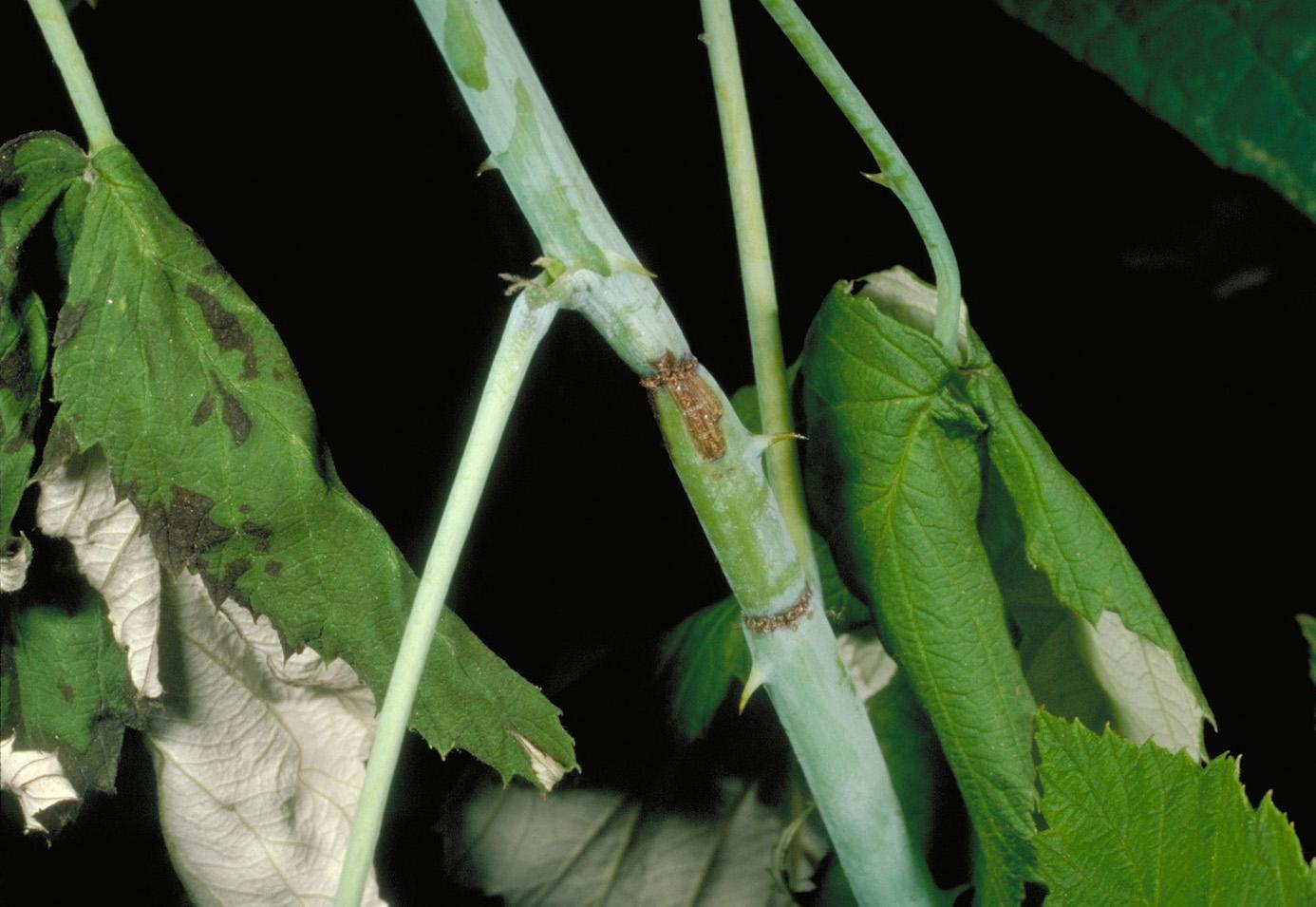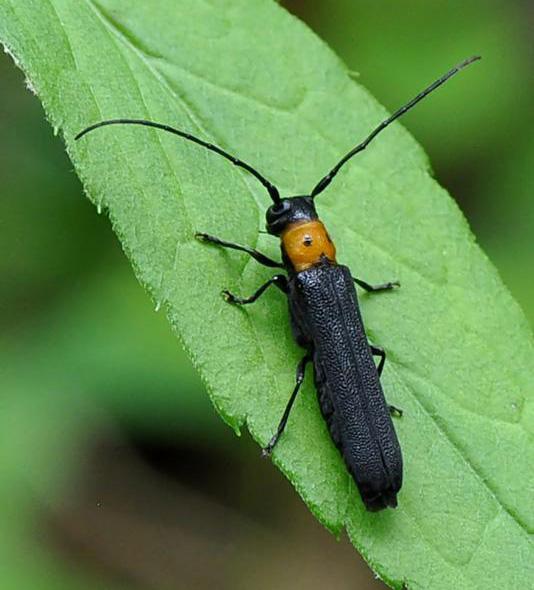Raspberry Cane Borer on Brambles
Return to Insects and Other Arthropod Pests
Raspberry cane borer (Oberea perspicillata) is a slender, long-horned (long antennae) beetle measuring about a 1/2-inch long. It is black in color; thorax is yelloworange with two black dots. Antennae are long, which helps distinguish it from the redneck cane borer. Boring activity can result in wilting cane tips, dieback, and cane death. Damage is readily identified by the presence of two rings of punctures (oviposition rings) about 1/2 inch apart and located 4 to 6 inches below growing tips. After puncturing rings in canes, the female lays an egg between these rings. The raspberry cane borer emerges in June. Eggs hatch in July, and larvae begin burrowing towards the base of canes.

Raspberry cane borer oviposition rings cause damage to canes.
(Photo: Jim Baker, North Carolina State University, Bugwood.org)

Raspberry cane borer oviposition ring damage results in wilting cane tips.
(Photo: Ric Bessin, University of Kentucky)

Adult raspberry cane borer.
(Photo: Jon Yuschock, Bugwood.org)
Management:
- Examine plantings weekly during June and July for wilted cane tips or rings of punctures near cane tips.
- Prune infested canes below damage.
